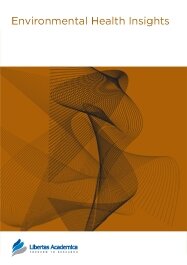

Publication Date: 23 Nov 2010
Type: Original Research
Journal: Environmental Health Insights
Citation: Environmental Health Insights 2010:4 93-108
doi: 10.4137/EHI.S6246

Background: People’s time-location patterns are important in air pollution exposure assessment because pollution levels may vary considerably by location. A growing number of studies are using global positioning systems (GPS) to track people’s time-location patterns. Many portable GPS units that archive location are commercially available at a cost that makes their use feasible for epidemiological studies.
Methods: We evaluated the performance of five portable GPS data loggers and two GPS cell phones by examining positional accuracy in typical locations (indoor, outdoor, in-vehicle) and factors that influence satellite reception (building material, building type), acquisition time (cold and warm start), battery life, and adequacy of memory for data storage. We examined stationary locations (eg, indoor, outdoor) and mobile environments (eg, walking, traveling by vehicle or bus) and compared GPS locations to highly-resolved US Geological Survey (USGS) and Digital Orthophoto Quarter Quadrangle (DOQQ) maps.
Results: The battery life of our tested instruments ranged from <9 hours to 48 hours. The acquisition of location time after startup ranged from a few seconds to >20 minutes and varied significantly by building structure type and by cold or warm start. No GPS device was found to have consistently superior performance with regard to spatial accuracy and signal loss. At fixed outdoor locations, 65%–95% of GPS points fell within 20-m of the corresponding DOQQ locations for all the devices. At fixed indoor locations, 50%–80% of GPS points fell within 20-m of the corresponding DOQQ locations for all the devices except one. Most of the GPS devices performed well during commuting on a freeway, with >80% of points within 10-m of the DOQQ route, but the performance was significantly impacted by surrounding structures on surface streets in highly urbanized areas.
Conclusions: All the tested GPS devices had limitations, but we identified several devices which showed promising performance for tracking subjects’ time location patterns in epidemiological studies.
PDF (736.04 KB PDF FORMAT)
RIS citation (ENDNOTE, REFERENCE MANAGER, PROCITE, REFWORKS)
BibTex citation (BIBDESK, LATEX)
XML
PMC HTML


My experience in publishing with Environmental Health Insights was positive from the beginning of the initial manuscript submittal, to the published product. The peer reviewers provided helpful suggestions, while the editorial and production staff kept me fully informed of the paper's process every step of the way. I recommend Libertas Academica for anyone that is serious about publishing their research in an efficient, friendly and professional manner.
Facebook Google+ Twitter
Pinterest Tumblr YouTube